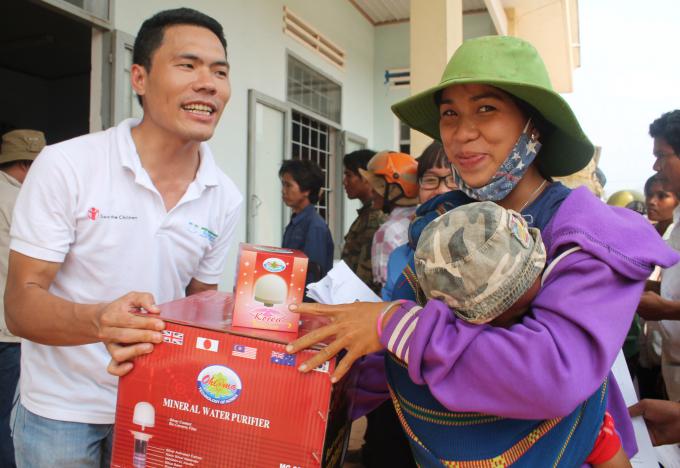Save the Children Steps up Relief Efforts amid Vietnam's Historical Drought
Hit by the worst drought in a century with at least 2 million people being affected, Vietnam needs humanitarian support to improve households’ access to clean water, ensure food security and contain diseases among humans and livestock. In response to this need, Save the Children in Vietnam has been stepping up efforts to provide humanitarian relief to drought-stricken areas.
El Nino started to affect Vietnam in 2014 with the impacts intensifying and causing severe drought in the central region and Central Highlands since the end of 2015. In the Central Highlands, water levels in reservoirs have fallen to record low and reservoir levels in other regions have retreated to 60-70 percent of their design capacity.
Drought and salinization have affected many provinces in Southern Central, Central Highlands and Mekong Delta. As of the end of March 2016, around 42,000 hectares of crops have been damaged by drought while both water shortages and saltwater intrusion have affected about 340,000 hectares in the Mekong Delta, the country’s rice basket, according to the Ministry of Agriculture and Rural Development.
An estimated 2 million people face water shortage for domestic use, a fifth of them being at risk of water-related disease outbreaks, according to the Vietnam government’s the latest emergency response report. The government has reported that 1.1 million people need food aid while 27,500 children and 39,000 women face malnutrition. Besides, 1.7 million people have lost their livelihoods. So far 14 provinces have declared state of emergency and 39 out of the country’s 63 provinces have requested for the government’s support in response to the drought.
The Vietnam government has provided 5,200 tons of relief food and allocated about 45 million USD to drought response efforts since late 2015. Last month, it launched an appeal for international support, namely the Call for support the implementation of the National Emergency Support Plan 2016/2017. Vietnam needs an estimated 48.5 million USD for WASH, FSL, nutrition and health support for drought-affected communities.
As one of the leading humanitarian organizations in Vietnam, Save the Children has stepped up our relief efforts to help drought-affected residents. We are conducting emergency response in the most affected and poorest communities in the Central Highlands province of Gia Lai. The intervention focuses on improving safe water access and ensuring food security for affected people and improving children’s nutrition.
In April and May, our emergency teams provided water filters to 1,600 households, nutrition biscuits to 1,900 children, as well as conducted in-depth assessments in an addition of two districts in Gia Lai province and two districts in the southernmost province of Ca Mau. While we have secured the funding for part of short-term immediate response, including water supply and food security, it covers just a small proportion of the drought-affected people’s needs. Meanwhile, there has been no confirmed funding for mid-term and long-term recovery efforts, such as livelihoods, which plays an essential role in ensuring the drought-affected people and children’s living conditions and the provinces’ sustainable development.
La Nina with torrential rains and flooding is expected to start late this year, immediately after the end of El Nino. Drought-affected people and children in Vietnam may face double troubles, encountering flooding calamities when they are yet to recover from the drought. These risks may send many of them back to poverty and slow the country’s development progress.
Save the Children in Vietnam believes that additional efforts should be invested into expanding the intervention scope, supporting mid-term and long-term recovery in the Central Highlands and Mekong Delta, particularly in livelihoods. We currently have offices in central and southern regions, which enables us to facilitate rapid staff deployment at field. We also have an experienced emergency response team, having served in humanitarian relief efforts in both domestic and international environments. Potential donors’ support would enable us to help drought-affected people and children overcome and recover from the historical drought and sustain Vietnam’s development.

 Vietnam
Vietnam